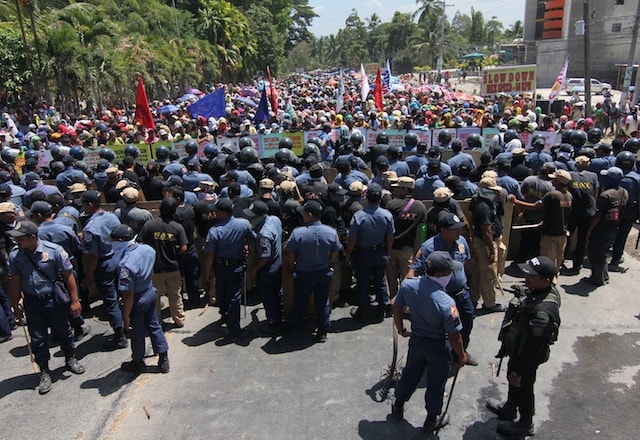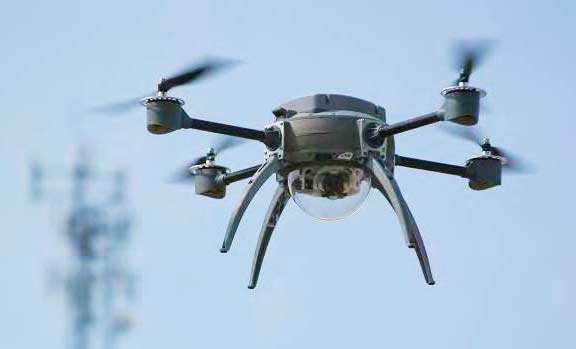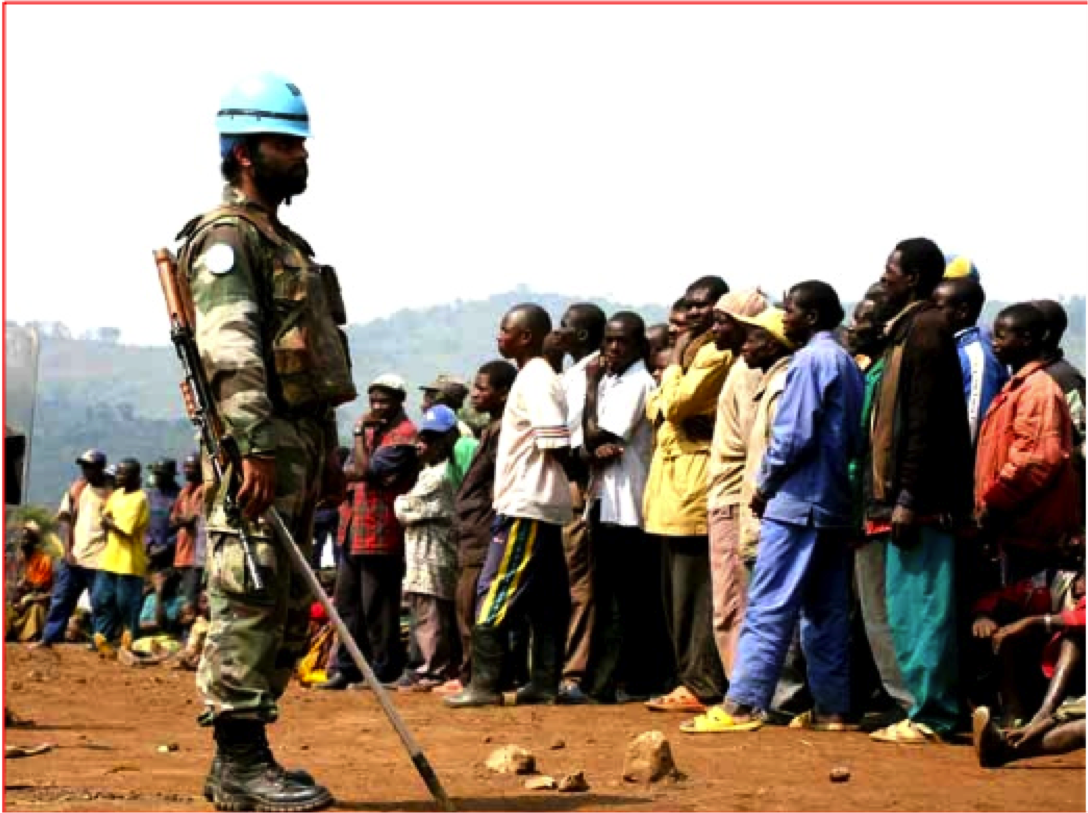By Rey Ty
El Niño Phenomenon and Social Development in the Philippines.
[dropcap]L[/dropcap]ike in many other developing countries, drought has affected food production of peasants and indigenous peoples in the Philippines.
Crop failure due to drought has led to hunger which people in the agricultural sector experience. Rural farmers together with their urban supporters staged a protest action to demand for their right to food. However, their supplication for rice was instead answered with bullets.
Since October 2015, North Cotabato region in the Philippines has been suffering from El Niño-related drought, as a result of which 37,000 famers and indigenous people are experiencing hunger.
As the El Niño phenomenon and a rat plague damage agricultural land, the government has officially declared a state of calamity there, paving the way for the release of calamity fund. The government allotted 1 Million Pesos (U.S. $ 311,111.00) calamity fund for North Cotabato. The Department of Agriculture states that the El Niño drought destroyed over 740,000 acres or 300,000 hectares of croplands.

The More Things Change, The More They Stay the Same
History seems to be repeating itself in the Philippines: The Mendiola Massacre, the Luisita Massacre, and now the Kidapawan Violent Dispersal.
Mendiola Massacre: In 1987, peasants went to Mendiola, Manila, near the Malacañang Presidential Palace, to protest for genuine land reform, during which state forces killed 13 peasants.
Hacienda Luisita Massacre: In 2004, farm workers demanded the implementation of the Comprehensive Agrarian Reform Program (CARP), protesting against the massive land-use conversion of the hacienda (agricultural estate) and massive lay-off of over 1,000 farm workers. State security forces killed about 12 farm workers (along with 2 children) who fought for fairer wages, increased benefits, labor rights, and land ownership.
The Philippines has the most number of land activists killed in Asia and Latin America. Two peasants and indigenous persons are killed monthly for their advocacy of land rights.
Now the Kidapawan Gunfire
To draw attention to their suffering, peasants and indigenous people along with their supporters from cause-oriented groups staged a protest action for 3 days. On March 29, 2016, 500 hungry peasants started to protest in front of the National Food Authority in Kidapawan, asserting that their crops failed due to a drought induced by the El Niño phenomenon. The farmers demanded emergency food aid and drought-resistant seeds. Talking with the peasants, North Cotabato Governor Emmylou Taliño-Mendoza had their names sent to the local government in order that they could receive rice rations.
At about 6 A.M. on March 30, 2016, about 6,000 farmers, indigenous peoples, and members of cause-oriented groups continued the protest in front of the National Food Authority in Kidapawan, North Cotabao, effectively blocking the Davao-Cotabato Highway. The protesters refused to leave until Governor Emmylou Taliño-Mendoza talks with the protesters with whom she refused to speak. The governor refused to grant the 15,000 sacks of rice that the peasants demanded. The government promised a meager 3 kilos of rice for 3 months for each person, which is next to nothing to meet basic food needs.
The rally permit expired at 10 A.M. of April 1, 2016. At 10:30 A.M., upon the guidance of Governor Mendoza, the Philippine National Police staged its clearing operation. The police attempted to disperse the demonstrators with water cannon and gunfire. Because the police fired guns in a peaceful assembly, the demonstrators fought back with whatever they could grab, including stones and wood, apparently in an attempt to protect themselves. A video shows the moment the police started to attack the demonstrators, including shooting at them, after which the protesters grabbed stones and wood in self-defense.
Fearing for their lives, many demonstrators ran to the Spottswood Methodist Center as their place of sanctuary. The mayor of Kidapawan, Joseph A. Evangelista, threatened to cancel the church’s permit for “harboring illegal demonstrators” on April 1, 2016. The police searched the church compound with an invalid general search warrant, as it did not indicate the type of firearms the search was carried out for. No illegal firearms were found during the search.
Using excessive force against unarmed protesters, state forces at the end of the day killed two farmers, one farmer died of heat stroke, and 116 people on both sides were injured, 18 of whom are critically wounded. The Kilusang Magbubukid ng Pilipinas (Philippine Peasant Movement) Southern Mindanao chair Pedro Arnado said that over 9 injuries were directly related to gunshots.
About 78 people, mostly farmers, were arrested, including 4 seniors: 29 women, of whom 4 are pregnant women, 45 men, and 4 children. Surviving police terror, the protesters were charged with illegal assault and have to post bail of 12,000 pesos (about U.S. $266.00). The protesting farmers are survivors of climate change, drought, hunger, government neglect, extra-judical killing and now they are required to “pay PhP 12,000 each for their temporary liberty.”
Response
People speaking on behalf of the Malacañang Presidential Palace are defensive about the Kidapawan events, telling the public not to “rush to judgment.” Members of civil society organizations, church groups, and politicians have reacted strongly to the Kidapawan killings.
In a statement the Ecumenical Bishops Forum (EBF) said: “The carnage that happened in Kidapawan, South Cotabato and the continuing harassment of the people and their supporters is deplorable.” The Promotion of Church People’s Response (PCPR) condemned the violent dispersal of the protest, calling it “barbaric” and characterized by government “negligence.”
Presidential candidates condemned the brutal dispersal of the barricade, as did vice-presidential candidates.
Peasants’ Demands to the Authorities
- Release the calamity fund to provide food—including 15,000 sacks of rice— drought-resistant seedlings, fertilizers, and pesticides to the farmers affected by El Niño drought
- Augment farm gate prices of agricultural produce
- State security forces must withdraw from peasant and indigenous communities
- Respect the human right to free speech, expression, and peaceful assembly of hungry peasants
- Release all protesters detained for their participation in the barricade
- Remove police units monitoring the wounded protesters in the hospitals
- Conduct independent investigation by competent authorities to determine accountability
- Indict and prosecute police involved in extra-judicial killing, frustrated extra-judicial killing, and other violent acts that injured the protesters
Global Parallelism
The events that unfurled in the Kidapawan protests remind us of the French Revolution and the Intifada in the Occupied Territories.
In the beginning of the French Revolution, hungry peasants, including mothers, went to the Palace of Versailles to demand for food aid during which Marie Antoinette infamously was alleged to have exclaimed: “Qu’ils mangent de la brioche! (Let them eat cake!).” Insulted, the protesters caused a national uproar. The royal family escaped to their palace in Paris, where the royal couple was decapitated.
Similarly, during the first Intifada, confronted by the colossal force of the occupiers, Palestinian kids picked up stones to defend their homeland, hurling them at the attacking occupying security forces.
These example show that people in power must listen to the just demands of the suffering masses or face consequences.
(Rey is a GSDM Global Development Reporter based in the Philippines)










